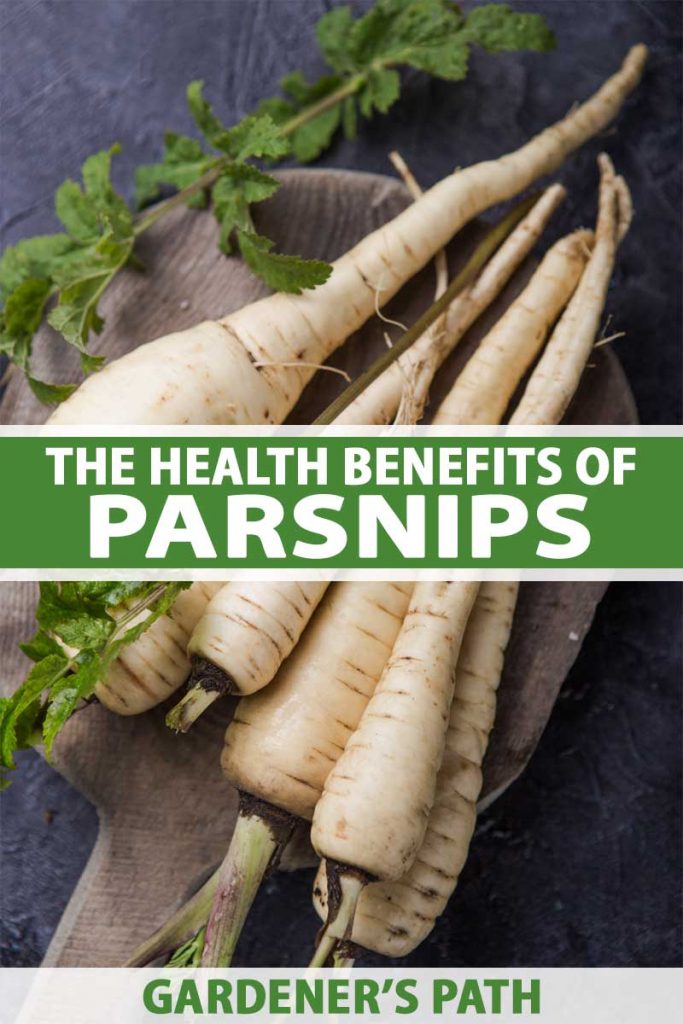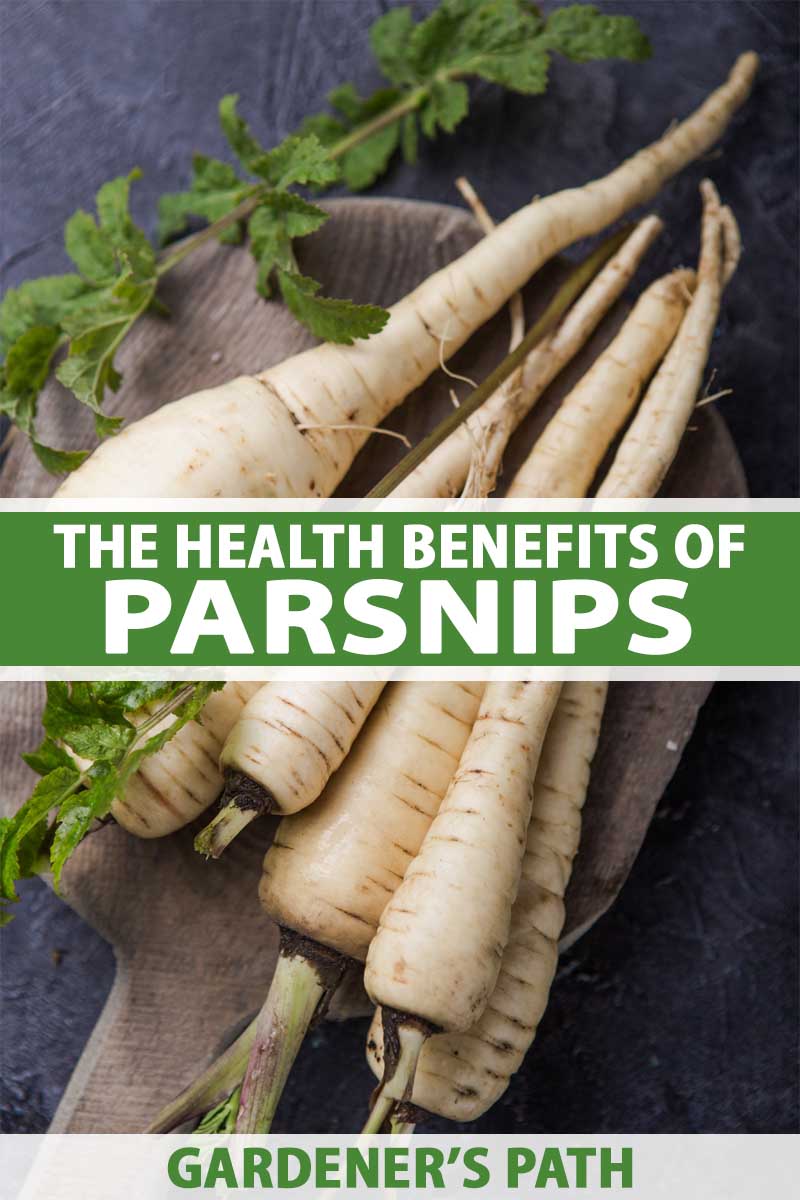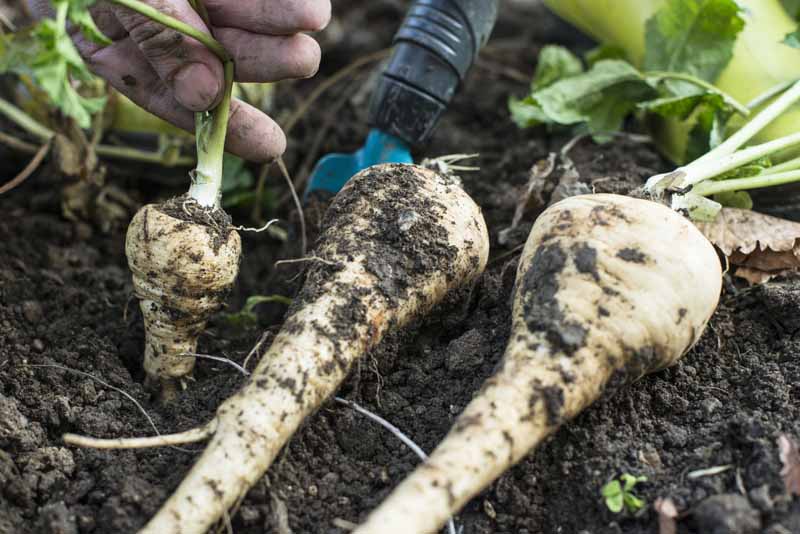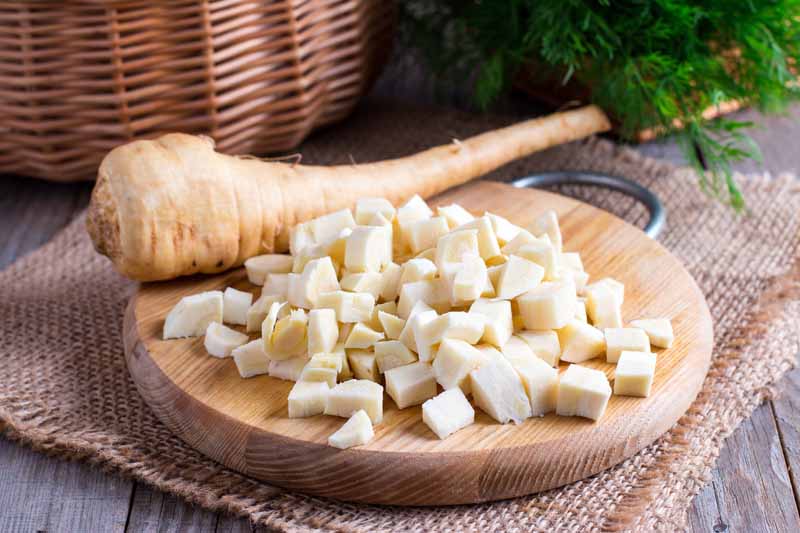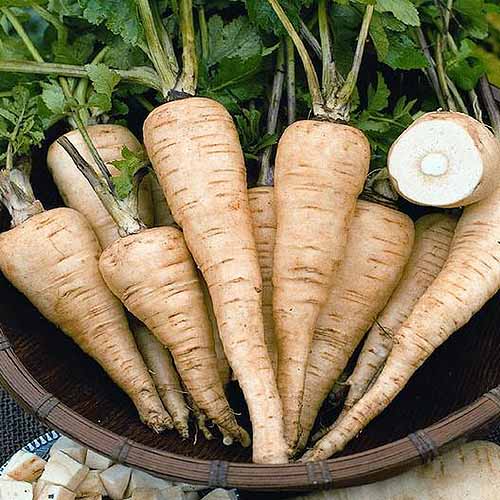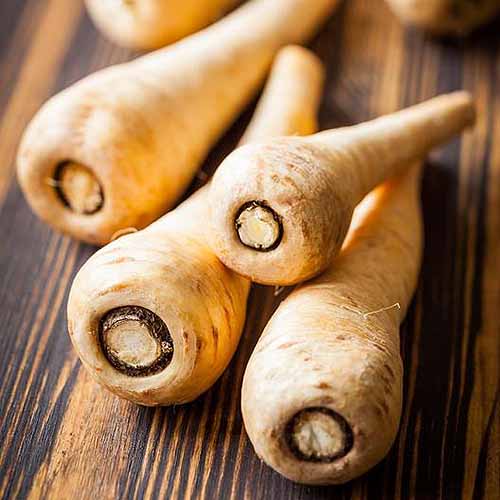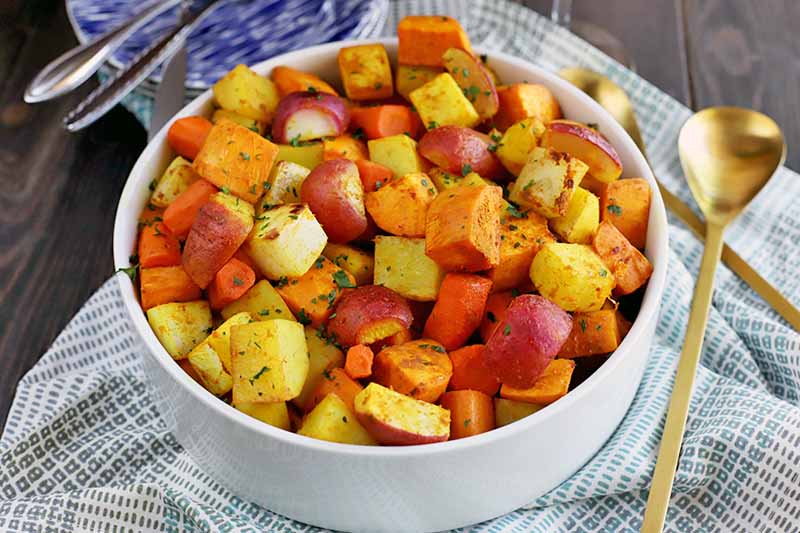One root veggie that I get particularly excited for is the parsnip. These paler carrot lookalikes are packed with nutrition and health benefits. We link to vendors to help you find relevant products. If you buy from one of our links, we may earn a commission.
What Is a Parsnip?
The parsnip, Pastinaca sativa, is a vegetable closely related to carrots and parsley, all members of the Umbellifer family. Like beets, as well as turnips and other Brassicas, they actually get sweeter after the arrival of a winter frost.
This biennial root is typically grown as an annual crop, and it flowers and goes to seed after emerging from dormancy in the second year if roots are left in the ground. Parsnips can be overwintered in the soil for a sweet and tender harvest in the late winter or early spring – and the reward is worth the wait, I promise! This vegetable can be eaten raw or cooked, bringing a lot of flavor to the table either way. Raw parsnips may be tougher and less palatable (they have a bit of a woody texture in comparison to carrots), so you may prefer to cook them, depending on your preferences. Just be sure to wear gloves when you are harvesting your homegrown roots! The leaves of the plant are not edible, and they can cause skin irritation. I suggest removing them carefully shortly after harvest.
Nutritional Value
Whichever way you decide to prepare your parsnips, you can benefit from some notable nutrients. A half-cup of raw slices provides 50 calories, 3.5 grams of fiber, 250 milligrams of potassium, 18 percent of the daily value of vitamin C, and 4.5 percent of daily magnesium needs for healthy adults.
Cooked parsnips in the same serving size offer the same amount of fiber and more potassium, but less vitamin C. Vegetables become more condensed when they are cooked, which can cause an increase in the quantity of some nutrients per serving. Other nutrients, like vitamin C, are heat sensitive and decrease in total quantity as a result of the cooking process. Vitamin C and potassium are both water-soluble, so cooking parsnips in water can cause some of these nutrients to leach out. Roasting or sauteing instead can help to preserve more of these valuable nutrients. Parsnips also provide phytochemicals like quercetin, falcarinol, and falcarindiol. You may remember that phytochemicals are special chemical compounds produced by plants that are generally beneficial for us to eat.
Health Benefits
With plentiful nutrients come plentiful health benefits! Those with high blood pressure may want to include more parsnips in their diet to benefit from the potassium they contain. A lower sodium and higher potassium diet may help to reduce blood pressure.
This is something to discuss with your dietitian and doctor to be sure that any dietary changes mesh with your plan of care and current medications. Next up, immune function support is a benefit that anyone can profit from. The dietary fiber promotes gut health, which plays an important role in helping to protect us against infection. The vitamin C also aids with immune function. For antioxidant and anti-inflammatory power, the phytochemicals come into play. Antioxidants may help to prevent cell damage from free radicals.
Cooking and Cultivars
With all of these benefits, hopefully you are now just as excited for this year’s root vegetable crops as I am. As I mentioned previously, growing high-quality parsnips can be a bit of a waiting game, but it’s easy to get going.
‘All American’ ‘All American’ seeds, available at Eden Brothers, produce roots that are sweet and tender. This variety is popular with gardeners, a solid overall choice for a variety of preparation methods.
‘Hollow Crown’ ‘Hollow Crown’ is another great choice. It has a sweet flavor and stores well. Seeds are available from Eden Brothers. When it comes time to enjoy your homegrown harvest, the options are plentiful. Parsnips are excellent for roasting, and they pair well with other root veggies. Try this fall side dish from our sister site, Foodal. Roasted root vegetables are perfect for getting into the autumnal spirit! Mashed parsnips make a fun substitute for or addition to mashed potatoes. They can also add a unique twist to a vegetable tray or fall salad, either roasted or finely shaved.
Parsnip Perfection
Once the winter frost has come and those sweet, white tubers are ready to go, they are truly – at least in my humble opinion – perfect. A food that helps our bodies to feel good, and that pleases our taste buds, is something I think everyone can get behind. Parsnips certainly fit the bill. If you want to learn more about these tasty root vegetables, check out these articles up next:
How to Plant and Grow Parsnips 9 of the Best Companion Plants for Parsnips Can You Regrow Parsnips from Kitchen Scraps?
Photo by Meghan Yager © Ask the Experts, LLC. ALL RIGHTS RESERVED. See our TOS for more details. Product photos via Eden Brothers. Uncredited photos: Shutterstock. With additional writing and editing by Allison Sidhu. The contents of this article have been reviewed and verified by a registered dietitian for informational purposes only. This article should not be construed as personalized or professional medical advice. Gardener’s Path and Ask the Experts, LLC assume no liability for the use or misuse of the material presented above. Always consult with a medical professional before changing your diet, or using supplements or manufactured or natural medications.
